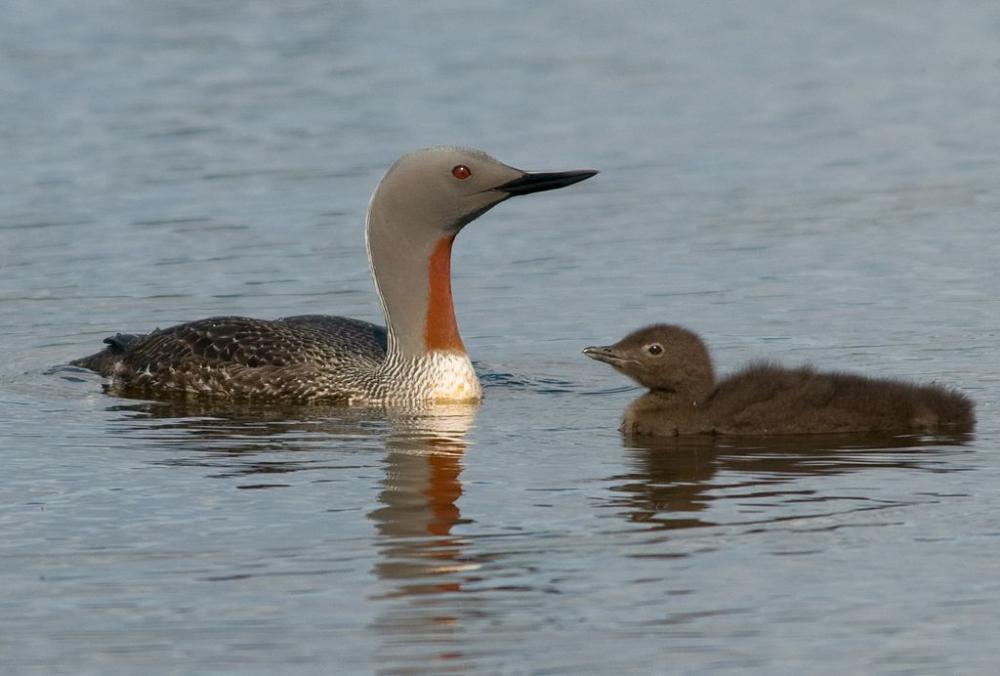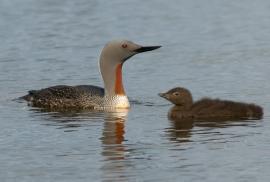Guide to Boreal Birds
Overview
The attractive breeding plumage of this loon is seldom seen in temperate latitudes, because the birds molt just before they depart for their nesting grounds. While not as social as Pacific Loons, wintering Red-throated Loons may gather in large numbers where food is abundant. They are common on salt water of all depths but frequently forage in shallow bays and estuaries rather than far out at sea. Because their legs are located so far back, loons have difficulty walking on land and are rarely found far from water. Most loons must paddle furiously across the surface of the water before becoming airborne, but the small Red-throated can practically spring directly into the air from land, a useful ability on its tundra breeding grounds. The birds are extremely vulnerable to oil pollution; many have been killed along both coasts as a result of recent oil spills.
Description
24-27" (61-69 cm). A small loon seldom seen far from salt water. In breeding plumage, has gray head and neck, rusty throat, black back spotted with white. In winter, similar to Common Loon but smaller, paler, with bill thinner and seemingly upturned.
Voice
Call, rarely sounded away from breeding grounds, is a series of high-pitched wails and shrieks.
Nesting
2 brownish-olive, usually spotted eggs in nest of aquatic vegetation floating in or beside water.
Habitat
Coastal and tundra ponds during summer; large lakes, bays, estuaries, and ocean in migration and winter.
Range/Migration
Breeds in Aleutian Islands, Alaska, and Canadian Arctic south to British Columbia, northern Manitoba, and Newfoundland. Winters south along Pacific Coast to southern California and along Gulf Coast and both coasts of Florida. Also in northern Eurasia.



